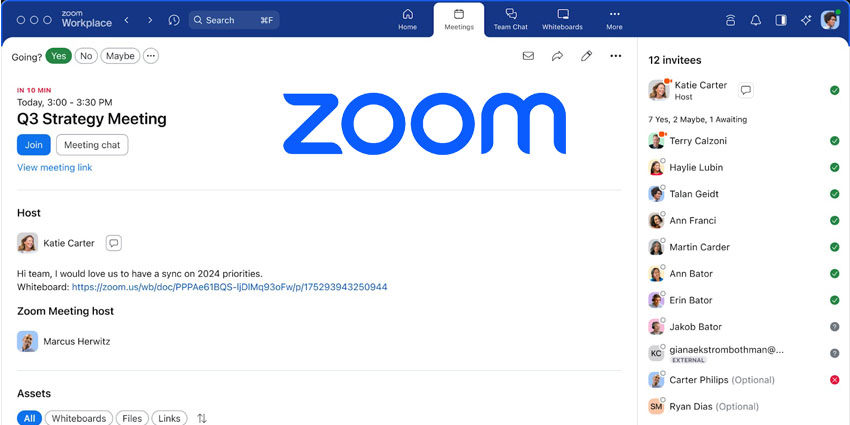Remote working. Agile methodologies. Dispersed teams. Flexible spaces. These are all buzzwords that you’ll hear again and again in conversations about the cultural shifts that are happening in working practices.
And as those changes gather pace, the spaces we work in are being adapted and evolved to reflect them. Indeed, the workspace of today is a very different environment to most offices of just a decade ago.
The space or the place?
It’s not just the workspace itself that is changing, but the place where people work. Yes, many companies will still have a central office, but the days of it having a full complement of people, all sitting at their own desks and working
9 – 5 are long gone. Now it’s likely to be more of a hub, where workers drop in to perform certain tasks or to collaborate face to face.
Indeed, the flexibility for users to move between home, mobile, hotdesk, meeting room or coffee shop is a central theme we see emerging.
So what’s the catalyst for change?
The profile of the modern workforce is changing rapidly. By 2020, Manpower Group predicts it is to comprise globally of 35% of Millennials and 24% of Gen Z.
That’s around 60% of employees who will be digital natives. They’ve been embracing technology all their lives. Mobility comes naturally to them. So it’s no surprise that they get frustrated by what they perceive as old-fashioned working practices. In a bid to attract the cream of the talent, companies need to evolve to meet their needs. Those who don’t will find they start to struggle to attract the quality staff that is essential to their success.
How is technology playing a role?
 Whilst cultural and generational changes drive new ways of thinking, the reality can only come to fruition with the support of the correct technology.
Whilst cultural and generational changes drive new ways of thinking, the reality can only come to fruition with the support of the correct technology.
As employees become increasingly dispersed, there’s a growing need to keep them engaged. The barrier of physical distance must be overcome to allow everyone to feel part of the team, to know they can contribute, and technology is the tool that accommodates this.
What’s needed is a truly unified communication platform for voice, video AND data, supported from any space, any device, anywhere, anytime – solutions that will underpin and facilitate an agile, flexible workplace strategy.
What do people need for the workplace to be effective?
Truly effective workplaces focus on the activities people are required to carry out. Any job will have multiple such activities, and employees need a choice of spaces, suitably equipped, to support the task in hand. In fact, according to workplace consultants Advanced Workplace Associates, there are up to 18 different activities and resultant spaces needed in the modern workplace.
The creation of different working zones gives staff the flexibility to work where they want, when they want, in a way that is appropriate to the task they are tackling.
As a technology distributor, we are regularly asked about how we can support enterprises looking to adapt existing spaces or design new areas to accommodate modern working practices. The starting point is always to understand how the space will be used.
A video conferencing environment for example, needs superb audio that not only gives even coverage across the whole room, but efficiently picks up remote participants’ voices. Musts for a ‘drop in’ area include great connectivity – wireless charging, WiFi hotspots or network points and ample desk mounted power sockets for laptops. A creative brainstorm area has different needs again – effective collaboration tools that can be remotely accessed are essential – as is seating that encourages people to stand up and contribute naturally.
The challenge, of course, is finding the right technology that can meet those multiple spaces’ needs with one software platform across multiple hardware devices. Employees need to be able to move seamlessly from space to space without the hassle of compatibility issues.
Do workplaces like this actually exist?
Yes, increasingly organisations are seeing that adopting a flexible approach is not just a nice to have, it’s an absolute essential to their future success.
Microsoft is a great example of an organisation that seeks out the cream of the crop in terms of potential employees and has created a workspace that attracts them.
Of course, not every organisation has the resources of Microsoft at their disposal. But for those companies willing to embrace an activity-based approach, there are solid commercial benefits. From allowing space to be used more efficiently and intensively, thereby saving on real estate costs, through to improved cohesion between teams and a reduction in employee churn.
Done correctly, the workplace becomes a more collaborative, productive and pleasant place to be.
Guest Blog by Jon Knight, Commercial Director, Ascentae
Jon Knight is commercial director of technology distributor Ascentae. Ascentae is a partner in Workplace House, an environment that embraces activity-based working.







